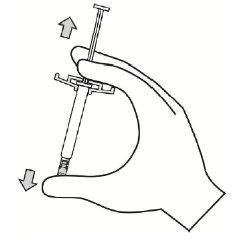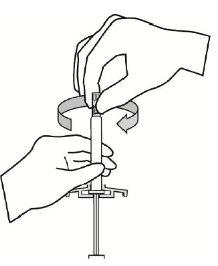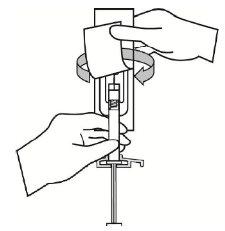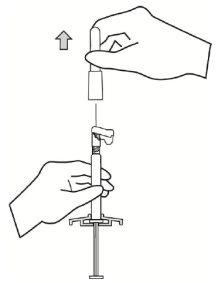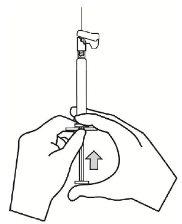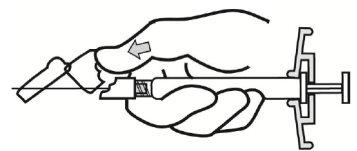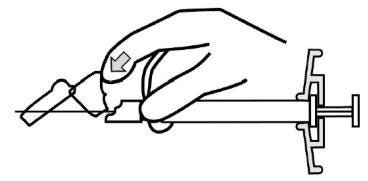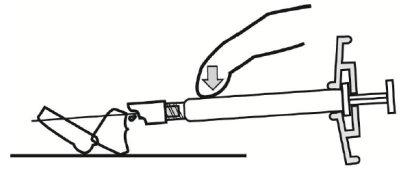
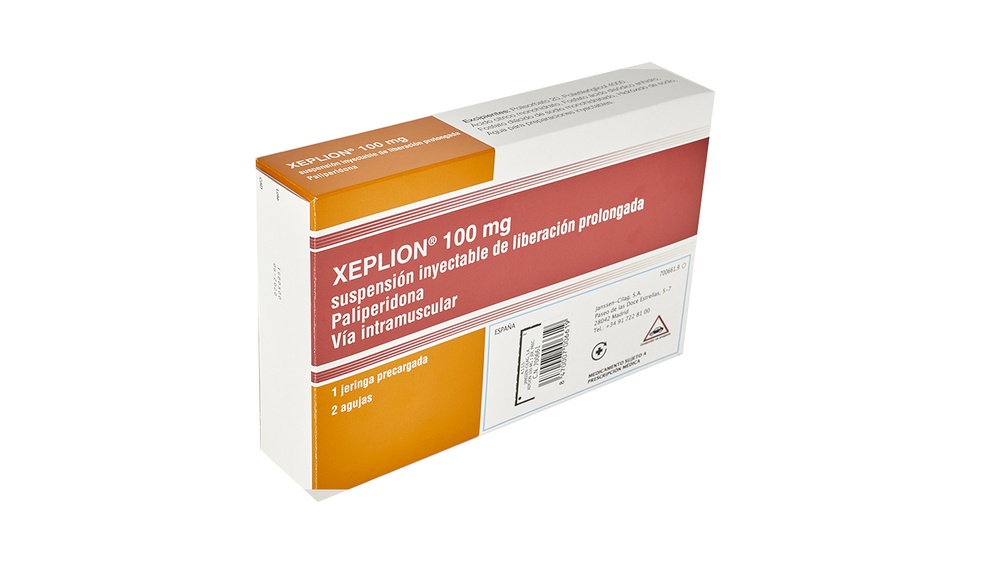
XEPLION 100 mg PROLONGED-RELEASE INJECTABLE SUSPENSION

Ask a doctor about a prescription for XEPLION 100 mg PROLONGED-RELEASE INJECTABLE SUSPENSION

How to use XEPLION 100 mg PROLONGED-RELEASE INJECTABLE SUSPENSION
Introduction
Package Leaflet: Information for the User
Xeplion 25 mg prolonged-release injectable suspension
Xeplion 50 mg prolonged-release injectable suspension
Xeplion 75 mg prolonged-release injectable suspension
Xeplion 100 mg prolonged-release injectable suspension
Xeplion 150 mg prolonged-release injectable suspension
Paliperidone
Read all of this leaflet carefully before you start using this medicine because it contains important information for you.
- Keep this leaflet, you may need to read it again.
- If you have any further questions, ask your doctor, pharmacist, or nurse.
- If you experience any side effects, talk to your doctor, pharmacist, or nurse, even if they are not listed in this leaflet. See section 4.
Contents of the pack and other information:
- What is Xeplion and what is it used for
- What you need to know before you use Xeplion
- How to use Xeplion
- Possible side effects
- Storage of Xeplion
- Contents of the pack and further information
1. What is Xeplion and what is it used for
Xeplion contains the active substance paliperidone, which belongs to a class of medicines called antipsychotics, and is used as maintenance treatment for symptoms of schizophrenia in adult patients stabilized with paliperidone or risperidone.
If you have shown a response to paliperidone or risperidone in the past and have mild or moderate symptoms, your doctor may start treatment with Xeplion without prior stabilization with paliperidone or risperidone.
Schizophrenia is a disorder with "positive" and "negative" symptoms. Positive means an excess of symptoms that are not normally present. For example, a person with schizophrenia may hear voices or see things that do not exist (called hallucinations), have false beliefs (called delusions), or have an abnormal distrust of others. Negative refers to the lack of behaviors or feelings that are normally present. For example, a person with schizophrenia may withdraw into themselves and not respond to any emotional stimulus or may have problems speaking in a clear and logical manner. People with this disorder may also feel depressed, anxious, guilty, or tense.
Xeplion can help alleviate the symptoms of your illness and prevent them from coming back.
2. What you need to know before you use Xeplion
Do not use Xeplion
- if you are allergic to paliperidone or any of the other ingredients of this medicine (listed in section 6).
- if you are allergic to any other antipsychotic medicine, including risperidone.
Warnings and precautions
Talk to your doctor, pharmacist, or nurse before you start using Xeplion.
This medicine has not been studied in elderly patients with dementia. However, elderly patients with dementia who are being treated with other similar medicines may have an increased risk of stroke or death (see section 4, possible side effects).
All medicines can cause side effects, and some of the side effects of this medicine may worsen the symptoms of other conditions. For this reason, it is important that you discuss with your doctor any of the following conditions that may worsen during treatment with this medicine:
- if you have Parkinson's disease
- if you have ever been diagnosed with a condition whose symptoms include high temperature and muscle stiffness (also known as Neuroleptic Malignant Syndrome)
- if you have ever experienced abnormal movements of the tongue or face (Tardive Dyskinesia)
- if you have had low white blood cell counts in the past (which may or may not have been caused by other medicines)
- if you are diabetic or have a tendency to diabetes
- if you have had breast cancer or a tumor in the pituitary gland of the brain
- if you have any heart disease or are being treated for heart diseases that may make you more prone to a decrease in blood pressure
- if you have low blood pressure when standing up or getting up suddenly
- if you have epilepsy
- if you have kidney problems
- if you have liver problems
- if you have a prolonged and/or painful erection
- if you have difficulty controlling body temperature or are overheated
- if you have an abnormally high level of the hormone prolactin in your blood or if you have a tumor that may be dependent on prolactin
- if you or a family member has a history of blood clots, as antipsychotics have been associated with the formation of blood clots.
If you have any of these conditions, please consult your doctor, as it may be necessary to adjust your dose or keep you under observation for a period of time.
Because it has been rarely observed in patients treated with this medicine that there is a dangerously low number of a type of white blood cells necessary to fight infections in the blood, your doctor may check your white blood cell count.
Even if you have previously tolerated oral paliperidone or risperidone, rare allergic reactions may occur after receiving Xeplion injections. Seek medical help immediately if you experience a skin rash, swelling of the throat, itching, or breathing problems, as these may be signs of a severe allergic reaction.
This medicine may cause you to gain weight. Significant weight gain can negatively affect your health. Your doctor will regularly monitor your weight.
In patients treated with this medicine, diabetes mellitus or worsening of pre-existing diabetes mellitus has been observed, and your doctor should check for signs of high blood sugar. In patients with pre-existing diabetes mellitus, blood sugar should be regularly monitored.
Since this medicine can reduce the urge to vomit, there is a possibility that it may mask the normal response of the body to the ingestion of toxic substances or other conditions.
During eye surgery for cataracts, the pupil (the black circle in the center of the eye) may not increase in size as needed. Additionally, the iris (the colored part of the eye) may become flaccid during surgery, which can cause damage to the eye. If you are planning to have eye surgery, make sure to inform your ophthalmologist that you are using this medicine.
Children and adolescents
Do not use this medicine in children under 18 years of age.
Using Xeplion with other medicines
Tell your doctor if you are using, have recently used, or might use any other medicines.
Taking this medicine with carbamazepine (an antiepileptic and mood stabilizer) may require a change in your dose of this medicine.
Since this medicine acts mainly on the brain, interaction with other medicines that also act on it may cause an exaggeration of side effects, such as drowsiness or other effects on the brain, such as other psychiatric medicines, opioids, antihistamines, and sleeping medicines.
Since this medicine can lower blood pressure, you should be careful if you use this medicine with other medicines that also lower blood pressure.
This medicine may reduce the effect of medicines for Parkinson's disease and restless legs syndrome (e.g., levodopa).
This medicine may cause an abnormality in the electrocardiogram (ECG) that shows that it is necessary for an electrical impulse to travel through a certain part of the heart for a longer period (known as "prolongation of the QT interval"). Other medicines that have this effect include some medicines used to treat heart rhythm or to treat infections, in addition to other antipsychotics.
If you are prone to developing seizures, this medicine may increase your chances of experiencing them. Other medicines that have this effect include some medicines used to treat depression or to treat infections, in addition to other antipsychotics.
Xeplion should be used with caution with medicines that increase the activity of the central nervous system (psychostimulants such as methylphenidate).
Xeplion with alcohol
Alcohol should be avoided.
Pregnancy and breastfeeding
If you are pregnant or breastfeeding, think you may be pregnant, or plan to become pregnant, consult your doctor or pharmacist before using this medicine. You should not use this medicine during pregnancy unless you have discussed it with your doctor. The following symptoms may occur in newborn babies of mothers who have been treated with paliperidone in the last trimester of pregnancy (the last three months of pregnancy): tremor, stiffness and/or muscle weakness, drowsiness, agitation, breathing problems, and difficulty feeding. If your baby develops any of these symptoms, you should contact your doctor.
This medicine can pass from mother to child through breast milk and may harm the baby. Therefore, you should not breastfeed while using this medicine.
Driving and using machines
During treatment with this medicine, dizziness, extreme fatigue, and vision problems (see section 4) may occur. This should be taken into account when maximum attention is required, e.g., when driving or operating machines.
Xeplion contains sodium
This medicine contains less than 1 mmol of sodium (23 mg) per dose; it is essentially "sodium-free".
3. How to use Xeplion
Your doctor or another healthcare professional will administer this medicine to you. Your doctor will tell you when you should receive the next injection. It is important that you do not miss any of your scheduled doses. If you are unable to attend your appointment with your doctor, make sure to call them immediately to schedule another appointment as soon as possible.
You will receive the first injection (150 mg) and the second injection (100 mg) of this medicine in the upper arm approximately one week apart. From then on, you will receive an injection (of 25 mg to 150 mg) in the upper arm or buttocks once a month.
If your doctor is switching you from risperidone long-acting injection to this medicine, you will receive the first injection of this medicine (of 25 mg to 150 mg) in the upper arm or buttocks at the next scheduled injection. From then on, you will receive an injection (of 25 mg to 150 mg) in the upper arm or buttocks once a month.
Depending on your symptoms, your doctor may increase or decrease the amount of medicine you receive at the time of the monthly scheduled injection.
Patient with kidney problems
Your doctor may adjust the dose of this medicine according to your kidney function. If you have mild kidney problems, your doctor may give you a lower dose. You should not use this medicine if you have moderate or severe kidney problems.
Elderly patients
Your doctor may reduce the dose of this medicine if your kidney function is decreased.
If you receive more Xeplion than you should
You will receive this medicine under medical supervision; it is therefore unlikely that you will receive an excessive dose.
Patient who have received an overdose of paliperidone may experience the following symptoms: drowsiness or sedation, rapid heart rate, low blood pressure, abnormalities in the electrocardiogram (heart tracing), or slow or abnormal movements of the face, body, arms, or legs.
If you stop using Xeplion
If you stop receiving your injections, the effects of the medicine will be lost. You should not stop using this medicine unless your doctor tells you to, as your symptoms may come back.
If you have any further questions about the use of this medicine, ask your doctor or pharmacist.
4. Possible Adverse Effects
Like all medicines, this medicine can cause adverse effects, although not all people suffer from them.
Inform your doctor immediately if:
- you have blood clots in the veins, especially in the legs (symptoms include swelling, pain, and redness of the leg), which can circulate through the blood vessels to the lungs, causing chest pain and difficulty breathing. If you notice any of these symptoms, seek medical advice immediately.
- you have dementia and experience a sudden change in your mental state or sudden weakness or numbness of the face, arms, or legs, especially on one side, or have difficulty speaking even for a short period. These may be signs of a stroke.
- you have a fever, muscle stiffness, sweating, or a decrease in the level of consciousness (a condition known as "Neuroleptic Malignant Syndrome"). You may need immediate medical treatment.
- you are a man and experience a prolonged or painful erection. This is known as priapism. You may need immediate medical treatment.
- you experience involuntary rhythmic movements of the tongue, mouth, and face. It may be necessary to withdraw paliperidone.
- you have a severe allergic reaction characterized by fever, swelling of the mouth, face, lips, or tongue, difficulty breathing, itching, rash, and sometimes a drop in blood pressure (i.e., an "anaphylactic reaction"). Even if you have previously tolerated oral risperidone or paliperidone, allergic reactions have rarely appeared after receiving paliperidone injections.
- you are scheduled to undergo eye surgery, be sure to tell your ophthalmologist that you are taking this medicine. During eye surgery for cataracts, it is possible that the iris (the colored part of the eye) may become flaccid during surgery (known as "floppy iris syndrome"), which can cause eye damage.
- you have a dangerously low number of a type of white blood cell necessary to fight blood infections.
The following adverse effects may occur:
Very Common Adverse Effects: may affect more than 1 in 10 patients
- difficulty staying or falling asleep.
Common Adverse Effects: may affect up to 1 in 10 patients
- common cold symptoms, urinary tract infection, feeling like you have the flu
- Xeplion may increase the levels of a hormone called "prolactin" that is detected in blood tests (which may or may not cause symptoms). When symptoms of increased prolactin appear, they may include (in men) breast swelling, difficulty having or maintaining erections, or other sexual dysfunctions; (in women) breast discomfort, milk secretion from the breasts, loss of menstrual periods, or other problems with the cycle.
- increased blood sugar, weight gain, weight loss, decreased appetite
- irritability, depression, anxiety
- parkinsonism: This disease may include slow or altered movement, feeling of stiffness or tension in the muscles (making jerky movements), and sometimes a feeling of "freezing" of movement that then restarts. Other signs of parkinsonism include walking slowly, dragging feet, tremors while resting, increased saliva and/or drooling, and loss of facial expressiveness
- restlessness, feeling drowsy or less attentive
- distonia: It is a disorder that involves slow or continuous involuntary contraction of the muscles. Although any part of the body can be affected (and can cause abnormal postures), distonia often affects the muscles of the face, including abnormal movements of the eyes, mouth, tongue, or jaw
- dizziness
- dykinesia: This disorder involves involuntary muscle movements and may include repetitive, spasmodic, or twisting movements, or spasms
- tremors (shakiness)
- headache
- rapid heartbeat
- increased blood pressure
- cough, nasal congestion
- abdominal pain, vomiting, nausea, constipation, diarrhea, indigestion, toothache
- increased liver transaminases in blood
- bone or muscle pain, back pain, joint pain
- absence of menstruation
- milk secretion from the breasts
- fever, weakness, fatigue (tiredness)
- a reaction at the injection site, including itching, pain, or swelling.
Uncommon Adverse Effects: may affect up to 1 in 100 patients
- pneumonia, chest infection (bronchitis), respiratory tract infection, nose infection, bladder infection, ear infection, fungal infection of the nails, tonsillitis, skin infection
- decrease in the number of white blood cells, decrease in a type of white blood cell that helps fight infections, decrease in platelets (blood cells that help stop bleeding), anemia
- allergic reaction
- diabetes or worsening of diabetes, increased insulin (a hormone that controls blood sugar levels) in blood
- increased appetite
- loss of appetite that causes malnutrition and weight loss
- increased triglycerides in blood (fat), increased cholesterol in blood
- sleep disorder, euphoria (mania), decreased sexual desire, nervousness, nightmares
- tardive dyskinesia (spasms or uncontrolled spasmodic movements of the face, tongue, or other parts of the body). Inform your doctor immediately if you experience involuntary rhythmic movements of the tongue, mouth, or face. It may be necessary to withdraw this medicine.
- fainting, restlessness that causes movement of body parts, dizziness when standing up, attention problems, speech problems, loss or alteration of taste, decreased skin sensitivity to pain or touch, sensation of tingling, pinching, or numbness of the skin
- blurred vision, eye infection or "red eye", dry eyes
- feeling that everything is spinning (vertigo), ringing in the ears, ear pain
- disruption of conduction between the upper and lower parts of the heart, anomaly in the electrical activity of the heart, prolongation of the QT interval in the heart, rapid heartbeat when standing up, slow heartbeat, anomalies in the electrical tracing of the heart (electrocardiogram or ECG), sensation of fluttering or pounding in the chest (palpitations)
- decreased blood pressure, low blood pressure when standing up (therefore, some people taking this medicine may feel weak, dizzy, or may faint when getting up or sitting down suddenly)
- shortness of breath, congestion of the airways, wheezing, sore throat, nosebleeds
- abdominal discomfort, stomach or intestine infection, difficulty swallowing, dry mouth
- excess gas or flatulence
- increased GGT (a liver enzyme called gamma-glutamyltransferase) in blood, increased liver enzymes in blood
- hives (or "urticaria"), itching, rash, hair loss, eczema, dry skin, redness of the skin, acne
- increased CPK (creatine phosphokinase) in blood, an enzyme that is sometimes released with muscle breakdown
- muscle spasms, joint stiffness, muscle weakness, neck pain
- urinary incontinence (loss of control), frequent urination, pain when urinating
- erectile dysfunction, ejaculation disorder, absence of menstrual periods or other problems with the cycle (women), breast development in men, sexual dysfunction, breast pain
- swelling of the face, mouth, eyes, or lips, swelling of the body, arms, or legs
- increased body temperature
- change in gait
- chest pain, chest discomfort, feeling of discomfort
- skin thickening
- falls.
Rare Adverse Effects: may affect up to 1 in 1,000 patients
- eye infection
- skin inflammation caused by mites, abscess under the skin
- increased eosinophils (a type of white blood cell) in the blood
- inadequate secretion of the hormone that controls urine volume
- sugar in the urine
- complications of uncontrolled diabetes that can be life-threatening
- decreased blood sugar
- excessive water intake
- lack of movement or response while awake (catatonia)
- confusion
- sleepwalking
- absence of emotions
- inability to achieve orgasm
- neuroleptic malignant syndrome (confusion, decreased or lost consciousness, high fever, and severe muscle stiffness), problems in the blood vessels of the brain, including sudden loss of blood flow to the brain (stroke or "mini" stroke), unresponsiveness to stimuli, loss of consciousness, decreased level of consciousness, seizures (epileptic crises), balance disorder
- abnormal coordination
- glaucoma (increased pressure in the eyeball)
- eye movement problems, eye rotation, hypersensitivity of the eyes to light, increased tearing, redness of the eyes
- atrial fibrillation (abnormal heart rhythm), irregular heartbeat
- blood clots in the veins, especially in the legs (symptoms include swelling, pain, and redness of the leg). If you experience any of these symptoms, seek medical help immediately.
- flushing
- difficulty breathing during sleep (sleep apnea)
- pulmonary congestion
- crackling sounds in the lungs
- pancreatitis, tongue swelling, fecal incontinence, very hard stools
- chapped lips
- drug-related skin rash, skin thickening, dandruff
- muscle fiber breakdown and muscle pain (rhabdomyolysis)
- joint swelling
- inability to urinate
- breast discomfort, breast gland growth, breast growth
- vaginal discharge
- very low body temperature, chills, feeling of thirst,
- withdrawal symptoms from the medicine
- pus accumulation due to infection at the injection site, deep skin infection, cyst at the injection site, bruise at the injection site.
Frequency Not Known: cannot be estimated from the available data
- dangerously low number of a type of white blood cell necessary to fight infections
- severe allergic reaction characterized by fever, swelling of the mouth, face, lips, or tongue, difficulty breathing, itching, rash, and sometimes a drop in blood pressure
- dangerously excessive water intake
- sleep-related eating disorder
- diabetic coma
- head agitation
- blood clots in the lungs causing chest pain and difficulty breathing. If you experience any of these symptoms, seek medical help immediately.
- decrease in oxygen in parts of the body (due to decreased blood flow)
- rapid, shallow breathing, pneumonia caused by aspiration of food, voice disorder
- intestinal obstruction, absence of intestinal movement that causes obstruction
- yellow color of the skin and eyes (jaundice)
- severe allergic reaction with swelling that can affect the throat, causing difficulty breathing
- skin discoloration, scaly and itchy skin or scalp
- posture abnormality
- newborn babies, from mothers who have been treated with Xeplion during pregnancy, may experience adverse effects from the medicine and/or withdrawal symptoms, such as irritability, weak or sustained muscle contractions, agitation, drowsiness, breathing problems, or difficulty feeding
- priapism (a prolonged erection that may require surgical treatment)
- decreased body temperature
- dead skin cells at the injection site and ulcer at the injection site.
Reporting of Adverse Effects
If you experience any adverse effect, consult your doctor, pharmacist, or nurse, even if it is a possible adverse effect that does not appear in this leaflet. You can also report them directly through the national reporting system included in Appendix V.
By reporting adverse effects, you can contribute to providing more information on the safety of this medicine.
5. Storage of Xeplion
Keep this medicine out of the sight and reach of children.
Do not use this medicine after the expiration date that appears on the packaging. The expiration date is the last day of the month indicated.
Do not store above 30°C.
Medicines should not be disposed of via wastewater or household waste. Ask your pharmacist how to dispose of the packaging and medicines that are no longer needed. This will help protect the environment.
6. Container Contents and Additional Information
Xeplion Composition
The active ingredient is paliperidone.
Each Xeplion 25 mg pre-filled syringe contains 39 mg of paliperidone palmitate.
Each Xeplion 50 mg pre-filled syringe contains 78 mg of paliperidone palmitate.
Each Xeplion 75 mg pre-filled syringe contains 117 mg of paliperidone palmitate.
Each Xeplion 100 mg pre-filled syringe contains 156 mg of paliperidone palmitate.
Each Xeplion 150 mg pre-filled syringe contains 234 mg of paliperidone palmitate.
The other components are:
Polysorbate 20
Polyethylene glycol 4000
Citric acid monohydrate
Disodium phosphate anhydrous
Sodium dihydrogen phosphate monohydrate
Sodium hydroxide (for pH adjustment)
Water for injectable preparations
Product Appearance and Container Contents
Xeplion is a white to off-white prolonged-release injectable suspension, supplied in a pre-filled syringe.
Each container contains 1 pre-filled syringe and 2 needles.
Treatment Initiation Pack:
Each container contains 1 Xeplion 150 mg container and 1 Xeplion 100 mg container.
Only certain pack sizes may be marketed.
Marketing Authorisation Holder
Janssen-Cilag International NV
Turnhoutseweg 30
B-2340 Beerse
Belgium
Manufacturer
Janssen Pharmaceutica NV
Turnhoutseweg 30
B-2340 Beerse
Belgium
For further information on this medicinal product, please contact the local representative of the Marketing Authorisation Holder.
België/Belgique/Belgien Janssen-Cilag NV Tel/Tél: +32 14 64 94 11 | Lietuva UAB “JOHNSON & JOHNSON” Tel: +370 5 278 68 88 |
???????? ”??????? & ??????? ????????” ???? ???.:+359 2 489 94 00 | Luxembourg/Luxemburg Janssen-Cilag NV Tél/Tel: +32 14 64 94 11 |
Ceská republika Janssen-Cilag s.r.o. Tel:+420 227 012 227 | Magyarország Janssen-Cilag Kft. Tel.:+36 1 884 2858 |
Danmark Janssen-Cilag A/S Tlf: +45 45 94 82 82 | Malta AM MANGION LTD. Tel: +356 2397 6000 |
Deutschland Janssen-Cilag GmbH Tel: +49 2137-955-955 | Nederland Janssen-Cilag B.V. Tel: +31 76 711 1111 |
Eesti UAB “JOHNSON & JOHNSON” Eesti filiaal Tel.: +372 617 7410 | Norge Janssen-Cilag AS Tlf: +47 24 12 65 00 |
Ελλ?δα Janssen-Cilag Φαρμακευτικ? Α.Ε.Β.Ε Tηλ: +30 210 80 90 000 | Österreich Janssen-Cilag Pharma GmbH Tel: +43 1 610 300 |
España Janssen-Cilag, S.A. Tel: +34 91 722 81 00 | Polska Janssen-Cilag Polska Sp. z o.o. Tel.: +48 22 237 60 00 |
France Janssen-Cilag Tel: 0 800 25 50 75 / +33 1 55 00 40 03 | Portugal Janssen-Cilag Farmacêutica, Lda. Tel: +351 214 368 600 |
Hrvatska Johnson & Johnson S.E. d.o.o. Tel: +385 1 6610 700 | România Johnson & Johnson România SRL Tel: +40 21 207 1800 |
Ireland Janssen Sciences Ireland UC Tel: +353 1 800 709 122 | Slovenija Johnson & Johnson d.o.o. Tel: +386 1 401 18 00 |
Ísland Janssen-Cilag AB C/o Vistor hf Sími: +354 535 7000 | Slovenská republika Johnson & Johnson s.r.o. Tel: +421 232 408 400 |
Italia Janssen-Cilag SpA Tel: +39 02 2510 1 | Suomi/Finland Janssen-Cilag Oy Puh/Tel: +358 207 531 300 |
Κ?προς Βαρν?βας Χατζηπαναγ?ς Λτδ Tηλ: +357 22 207 700 | Sverige Janssen-Cilag AB Tel: +46 8 626 50 00 |
Latvija UAB “JOHNSON & JOHNSON” filiale Latvija Tel: +371 6789 3561 | United Kingdom Janssen-Cilag Ltd. Tel: +44 1 494 567 444 |
Date of Last Revision of this Leaflet:
Detailed information on this medicinal product is available on the European Medicines Agency web site: http://www.ema.europa.eu
This information is intended for healthcare professionals only and should be read in conjunction with the full prescribing information (Summary of Product Characteristics).
The injectable suspension is for single use. It should be visually examined for any foreign particles before administration. Do not use the product if the syringe is not visually free from foreign particles.
The container contains a pre-filled syringe and two safety needles (one 22-gauge, 1½-inch [38.1 mm x 0.72 mm] needle and one 23-gauge, 1-inch [25.4 mm x 0.64 mm] needle) for intramuscular injection. Xeplion is also available in a Treatment Initiation Kit, which contains two pre-filled syringes (150 mg + 100 mg) and two additional safety needles.
|
- 22-gauge x 1½” (Grey coloured hub)
- 23-gauge x 1” (Blue coloured hub)
- Pre-filled syringe
- Hub
- Needle tip protector
- Shake the syringe vigorously for at least 10 seconds to ensure a homogeneous suspension.
|
- Select the appropriate needle.
The first initiation dose of Xeplion (150 mg) is administered on Day 1 in the DELTOID muscle using the needle for DELTOID injection. The second initiation dose of Xeplion (100 mg) is also administered in the DELTOID muscle one week later (Day 8) using the needle for DELTOID injection.
If a patient is being switched from prolonged-release injectable risperidone to Xeplion, the first Xeplion injection (dose range of 25 mg to 150 mg) may be administered in the DELTOID muscle or the GLUTEAL muscle, using the appropriate needle for the injection site, at the time of the next scheduled injection.
Subsequent maintenance injections can be administered in either the DELTOID or GLUTEAL muscle using the appropriate needle for the injection site.
In the case of DELTOID injection, if the patient weighs < 90 kg, use the 23-gauge, 1-inch (25.4 mm x 0.64 mm) needle (needle with blue coloured hub); if the patient weighs ≥ 90 kg, use the 22-gauge, 1½-inch (38.1 mm x 0.72 mm) needle (needle with grey coloured hub).
In the case of GLUTEAL injection, use the 22-gauge, 1½-inch (38.1 mm x 0.72 mm) needle (needle with grey coloured hub).
- While holding the syringe in a vertical position, remove the rubber needle tip protector with a twisting motion.
|
- Open the blister pack of the safety needle halfway. Hold the needle cover by the paper/plastic part of the blister pack that you just opened. Attach the safety needle to the Luer connection of the syringe with a simple twisting motion in a clockwise direction.
|
- Pull the sheath straight to separate it from the needle. Do not twist the sheath, as the needle could become dislodged from the syringe.
|
- Hold the syringe with the needle in place in a vertical position to proceed with air elimination. Eliminate air from the syringe by carefully pushing the plunger forward.
|
- Inject the entire contents intramuscularly, slowly, and deeply into the selected DELTOID or GLUTEAL muscle of the patient. Do not administer intravascularly or subcutaneously.
- After completing the injection, use your thumb or other finger (8a, 8b) or a flat surface (8c) to activate the needle protection system. The system is fully activated when you hear a click. Dispose of the syringe with the needle in an appropriate manner.
8a
|
8b
|
8c
|
Disposal of unused medicinal products and all materials that have come into contact with them should be done in accordance with local regulations.

How much does XEPLION 100 mg PROLONGED-RELEASE INJECTABLE SUSPENSION cost in Spain ( 2025)?
The average price of XEPLION 100 mg PROLONGED-RELEASE INJECTABLE SUSPENSION in December, 2025 is around 187.29 EUR. Prices may vary depending on the region, pharmacy, and whether a prescription is required. Always check with a local pharmacy or online source for the most accurate information.
- Country of registration
- Average pharmacy price187.29 EUR
- Active substance
- Prescription requiredYes
- Manufacturer
- This information is for reference only and does not constitute medical advice. Always consult a licensed doctor before taking any medication. Oladoctor is not responsible for medical decisions based on this content.
- Alternatives to XEPLION 100 mg PROLONGED-RELEASE INJECTABLE SUSPENSIONDosage form: INJECTABLE, 150 mg + 100 mgActive substance: paliperidoneManufacturer: Teva Pharma S.L.U.Prescription requiredDosage form: INJECTABLE, 50 mgActive substance: paliperidoneManufacturer: Teva Pharma S.L.U.Prescription requiredDosage form: INJECTABLE, 1000 mgActive substance: paliperidoneManufacturer: Janssen-Cilag International N.VPrescription required
Alternatives to XEPLION 100 mg PROLONGED-RELEASE INJECTABLE SUSPENSION in other countries
The best alternatives with the same active ingredient and therapeutic effect.
Alternative to XEPLION 100 mg PROLONGED-RELEASE INJECTABLE SUSPENSION in Польща
Alternative to XEPLION 100 mg PROLONGED-RELEASE INJECTABLE SUSPENSION in Україна
Online doctors for XEPLION 100 mg PROLONGED-RELEASE INJECTABLE SUSPENSION
Discuss dosage, side effects, interactions, contraindications, and prescription renewal for XEPLION 100 mg PROLONGED-RELEASE INJECTABLE SUSPENSION – subject to medical assessment and local rules.





